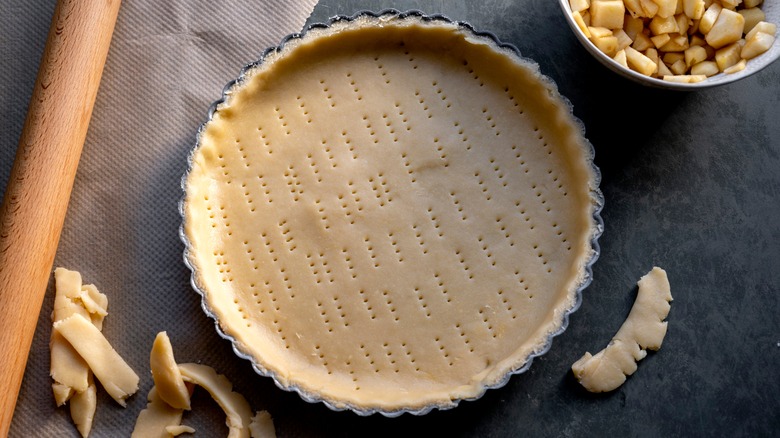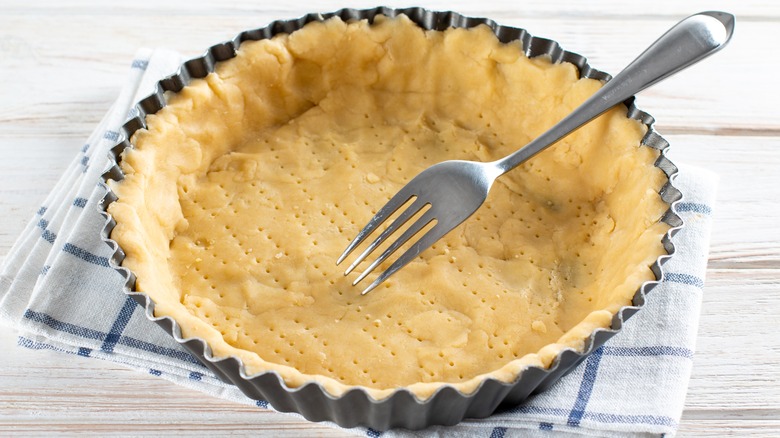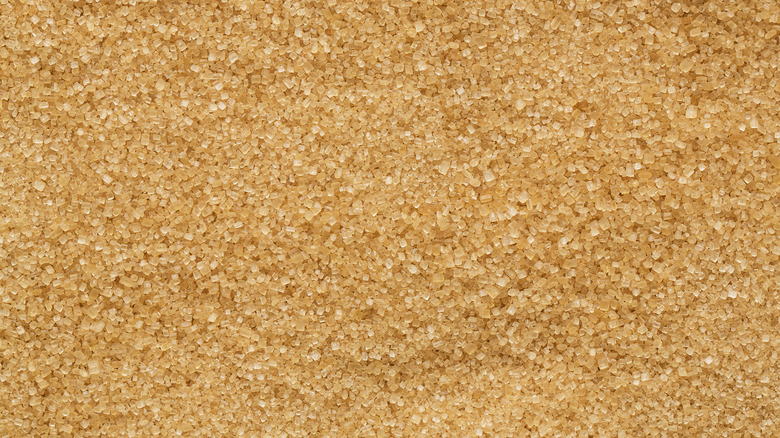Use Sugar Over Rice For A Versatile Pie Weight
If your greatest pie fear is the dreaded soggy bottom, here's some good news: Parbaking your crust will solve all of your gluey, chewy crust problems. During parbaking, your buttery pie crust gets partially baked, setting up the crust before you add your dense, moist fillings. The only drawback of this crispy hack? The buttery nature of the pie crust makes it shrink and slip when baked at high heat, creating an uneven and short pie shell. Bakers in the know prevent this by filling their raw pie dough with pie weights, which help hold the crust in place during the baking period.
Professional pie aficionados use ceramic pie weights, but for the casual pie baker, these pie weights are often pantry staples like dried beans and rice. These work fine, but there's an even better option: granulated sugar. Why use sugar instead of the usual suspects? First, the small granules are better at filling the nooks and crannies of the pie crust than larger beans and rice. Second, after using the sugar, you create a delicious byproduct: toasted sugar. This slightly caramelized ingredient can be used in numerous baking projects, from golden simple syrup to rich streusel.
How to use sugar as a pie weight
There are two crucial steps for using sugar as a pie weight. First, you'll need to line your raw pie crust with parchment paper or aluminum foil. Next, pour in as much sugar as you can, practically to the top of the pie dish. For a regular pie dish, this usually equals roughly four cups of granulated sugar. You want to make sure you've properly weighed down every inch of your pie crust.
If you're concerned that your sugar will melt in the oven, remember that sugar only melts at temperatures higher than 367 degrees Fahrenheit. Most parbaking recipes call for baking your crust at 350 degrees for 20 minutes or less, meaning that the sugar won't get nearly hot enough to melt. Instead, it gets gently toasted, taking on a caramel flavor and a golden hue. Of course, this tip relies heavily on a properly calibrated oven, so make sure you can trust your oven temperature before proceeding with using sugar as your pie weight. You should also avoid using other sugars, like molasses-rich brown sugar or alternative coconut sugar, as these sugars have much lower melting temperatures.
Sweet uses for toasted sugar
After your parbaking, you should have two delicious byproducts: a golden pie crust and toasted sugar. While your pie crust already has a destined purpose, your toasted sugar can be a much more versatile ingredient. Before using it, place your sugar into a food processor and give it a blitz or two to help break up any hidden clumps. Once that's done, you've got a new pantry item that will transform every baked good it touches.
You can use this golden sugar just like granulated sugar, allowing it to serve as the caramel backbone of anything you choose. The simpler the flavor base, the more the toasted sugar will stand out, so consider incorporating it into sugar cookies, vanilla ice cream, or simple syrup. You can also treat it like turbinado sugar, stirring it into your morning coffee or tea for a more sophisticated flavor. Or, for a late-night treat, create a toasted sugar rim for your favorite sugary cocktail. Whatever you opt for, toasted sugar will likely convert you to the idea that sugar is the ultimate pie weight.



